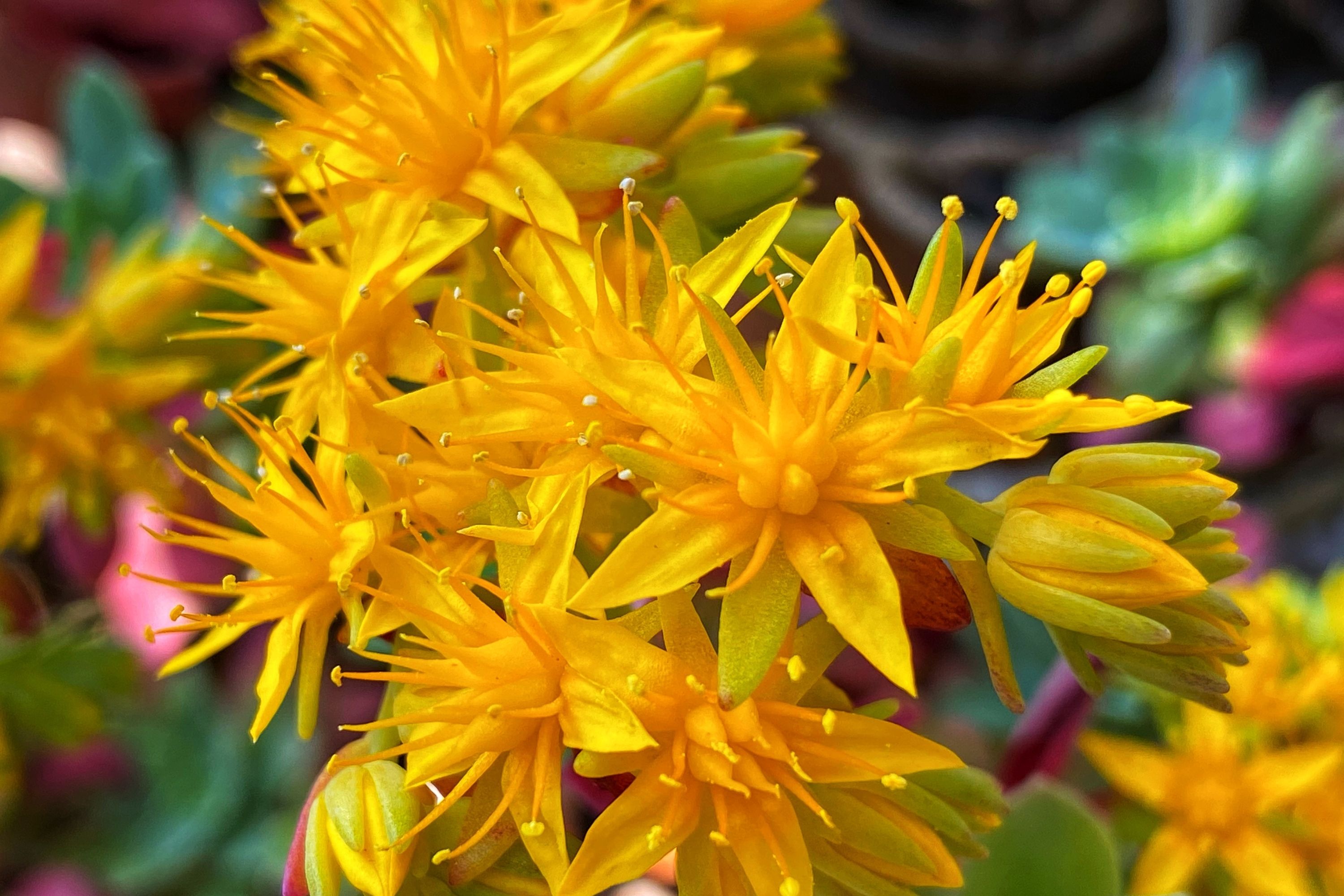Green cockscomb
(Sedum praealtum)

Description
Sedum praealtum, also known as shrubby stonecrop or green cockscomb is a small, woody succulent shrub in the stonecrop family that is native to Mexico. It features sub-woody brown or grayish stems and fleshy, hairless leaves. It grows to 3 feet tall (90cm) and spreads to 4 feet (1.2m). The lime-green leaves are spatulated and are 1.5 inches (3.8cm) long, arranged in rosettes. Large clusters of bright, star-like yellow flowers appear from late winter to spring. The plant tends to be summer-dormant. It is closely related to Sedum dendroideum and would look similar to it, but 'dendroideum' should be differentiated by the existence of a line of subepidermal glands on its margins near the leaf tips, in addition to 'praealtum' remaining green, whereas 'dendroideum' blushes red on the margins. It can be used as a bonsai due to its treelike appearance and it bears a resemblance to the Jade plant. It easily grows in rock gardens in well-drained, poor soils. Propagation can easily be done by cuttings and the plant is not cold hardy. A spermicide developed from this plant, that helps women control birth rates without any major side effects, was around 20% more effective than nonoxynol-9. Its leaf substance has been traditionally used for burns, hemorrhoids and dysentery, gum inflammation, and as well as an eye drop for conjunctivitis and irritations. Sedum is a large genus of flowering plants in the family Crassulaceae, members of which are commonly known as stonecrops. The genus has been described as containing up to 600 species, subsequently reduced to 400–500. They are leaf succulents found primarily in the Northern Hemisphere, but extending into the southern hemisphere in Africa and South America. The plants vary from annual and creeping herbs to shrubs. The plants have water-storing leaves. The flowers usually have five petals, seldom four or six. There are typically twice as many stamens as petals. Various species formerly classified as Sedum are now in the segregate genera Hylotelephium and Rhodiola. Sedum was first formally described by Carl Linnaeus in 1753, with 15 species. Of the genera encompassed by the Crassulaceae family, Sedum is the most species rich, the most morphologically diverse and most complex taxonomically. Historically it was placed in the subfamily Sedoideae, of which it was the type genus. Of the three modern subfamilies of the Crassulaceae, based on molecular phylogenetics Sedum is placed in the subfamily Sempervivoideae.
Taxonomic tree:







